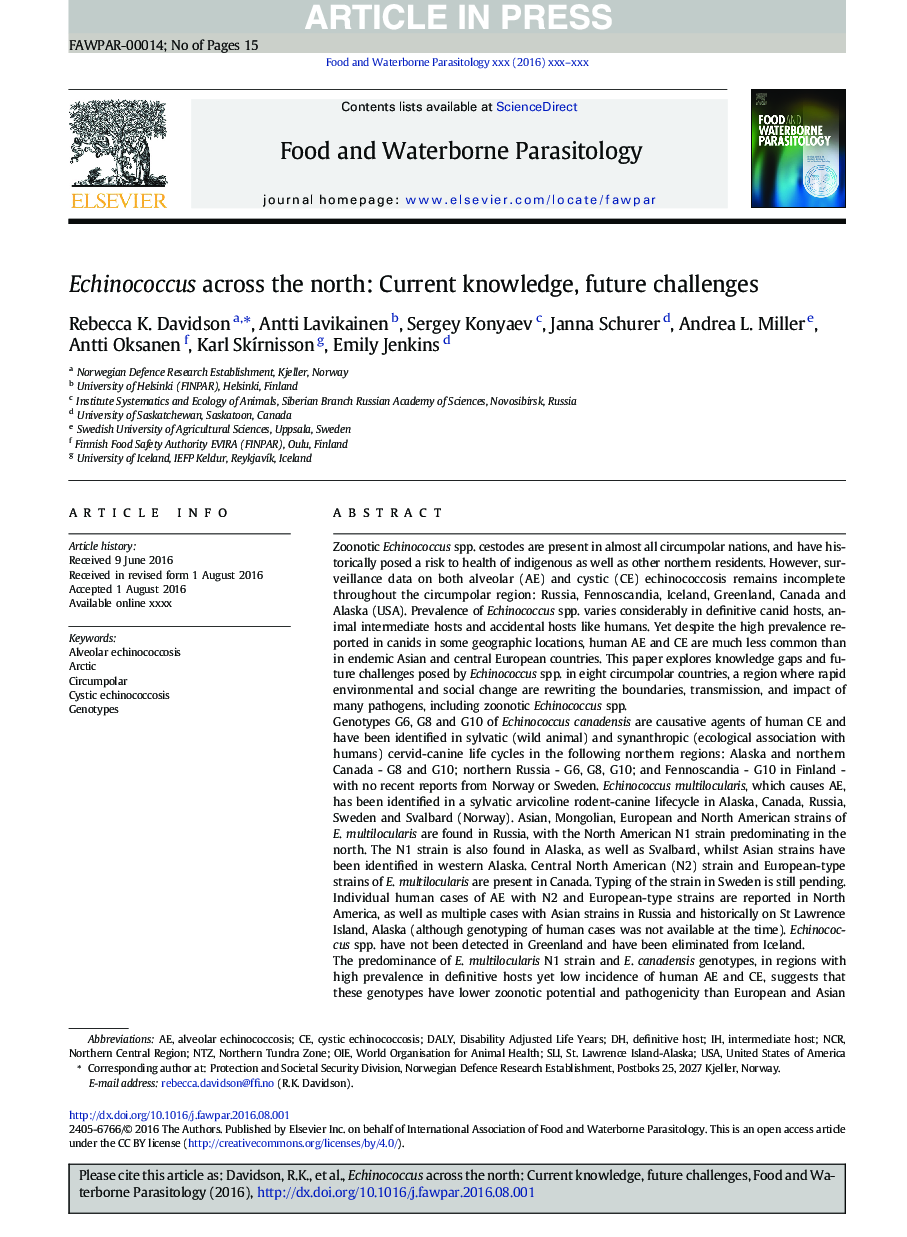| Article ID | Journal | Published Year | Pages | File Type |
|---|---|---|---|---|
| 5546260 | Food and Waterborne Parasitology | 2016 | 15 Pages |
Abstract
The predominance of E. multilocularis N1 strain and E. canadensis genotypes, in regions with high prevalence in definitive hosts yet low incidence of human AE and CE, suggests that these genotypes have lower zoonotic potential and pathogenicity than European and Asian strains of E. multilocularis and livestock genotypes of E granulosus sensu stricto. The continued monitoring of the emergence of Echinococcus genotypes within definitive and intermediate hosts, as well as people, is needed to assess the impact on public health risk, since the introduction of other genotypes could have serious repercussions. Lastly, determining risk factors and source attribution for human cases, including the possibility of food and waterborne transmission and the likelihood of autochthonous transmission, remain challenges.
Keywords
Related Topics
Life Sciences
Agricultural and Biological Sciences
Agricultural and Biological Sciences (General)
Authors
Rebecca K. Davidson, Antti Lavikainen, Sergey Konyaev, Janna Schurer, Andrea L. Miller, Antti Oksanen, Karl SkÃrnisson, Emily Jenkins,
